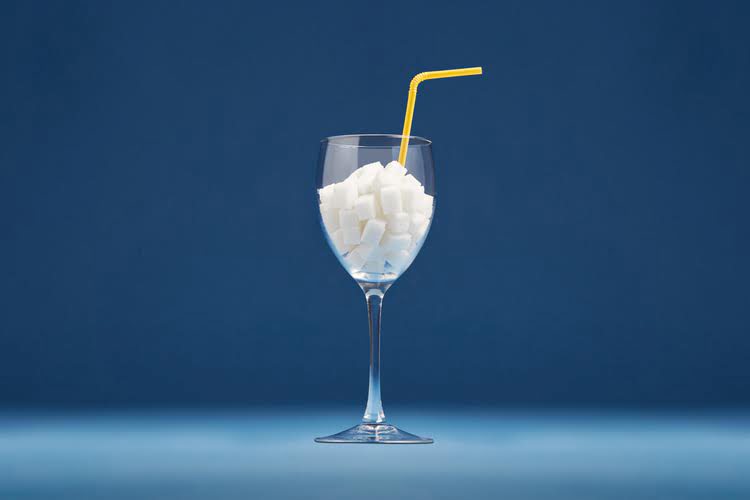There have been inspiring reports of certain therapies significantly improving the condition for certain people. But this likely depends on many factors, including the original cause of their symptoms and how many other contributing factors are affecting their hypersensitivity. The good news is that research is ongoing and many promising avenues are hyperalgesia: causes, symptoms, treatment, and more being explored for targeting visceral hypersensitivity.
Deterrence and Patient Education
Although pre-operative screening for chronic post surgical pain risk has rarely been effectively applied, quantitative sensory testing is predictive in small studies 120. As quantitative sensory testing methods are not yet convenient or common for pre-operative screening, only questionnaire screening and patient history are recommended by guidelines 58. However, future research into quantitative sensory testing methods coupled with a consensus definition of OIH, could improve screening and prevention.
- Severe hyperesthesia can also affect the nervous system, which might lead to nerve inflammation and seizures.
- Healthcare providers believe that visceral hypersensitivity may result from and/or contribute to chronic IBS symptoms.
- Tolerance occurs following prolonged opioid administration with pain resulting from reduced efficacy and requires increasing opioid doses.
- Since this condition equally involves your physical organs and your brain, approaching it from both sides is more pragmatic and has a better chance of long-term success.
- Researchers believe that fibromyalgia amplifies painful sensations by affecting the way your brain and spinal cord process painful and nonpainful signals.
Visceral Hypersensitivity
Finally, we discuss prevention including patient education and analgesic management choices. As prevention may serve as the best treatment, patient risk factors, opioid mitigation, and both pharmacologic and non-pharmacologic strategies are discussed. Studies have also reported that systemic local anesthetics may also act as NMDA antagonists 92,93, perhaps providing another indication for regional anesthesia techniques in the management and prevention of OIH. Combined, these studies and a recent meta-analysis 95, question the beneficial impact of perioperative intravenous lidocaine for analgesia.
How is hyperesthesia treated?
When opioids are required for patients with suspected OIH, an alternative is to utilize opioids with properties that may mitigate OIH. The contribution of NMDA receptors to OIH and the ability of ketamine to block OIH suggest NMDA antagonism as an important target for OIH prevention 96–98. Although methadone is a μ-receptor agonist, it is a racemic mixture and the d-isomer is an NMDA receptor antagonist 99. Methadone also exhibits incomplete cross-tolerance and remains potent even in patients on chronic opioid regimens. Methadone may therefore promote an opioid reduction of 40–50% while providing NMDA receptor antagonism and minimizing the risk of opioid withdrawal. While publications have described single-dose, intra-operative methadone administration 100–102, initiation of methadone otherwise in the perioperative period is not well described.
Coping Strategies for Living with Allodynia and Hyperalgesia
In an experimental clinical model utilizing transcutaneous stimulation for hyperalgesia, the antihyperalgesic effects of buprenorphine were more pronounced than the analgesic effects 104. It is largely believed that OIH is due to dysfunctional facilitation of descending nociceptive pathways of the spinal cord by the rostral ventral medulla. Both signaling pathways for reducing antinociceptive systems and amplifying pronociceptive signals have been implicated in OIH 28. Central factors including microglial activation 29 and upregulation of the central glutaminergic system and N-methyl-D-aspartate (NMDA) receptors 30 are thought to be important drivers of OIH. Peripherally, opioid receptor activity results in hyperalgesia priming of prostaglandin 31 and alterations in transient receptor potential channel function 32.
Key Components of Our Opioid Detox Program:
Some diagnostic criteria distinguish it from chronic fatigue syndrome, while other diagnostic criteria consider it to be a synonym for chronic fatigue syndrome. A defining characteristic of ME is post-exertional malaise (PEM), or post-exertional neuroimmune exhaustion (PENE), which is a notable exacerbation of symptoms brought on by small exertions. Symptoms can include cognitive impairments, muscle pain (myalgia), trouble remaining upright (orthostatic intolerance), sleep abnormalities, and gastro-intestinal impairments, among others.
Treatment and management
We offer a Confidential Insurance and Availability Check to make the process as seamless as possible, and Most Insurances Are Accepted. By Anne Asher, CPTAnne Asher, ACE-certified personal trainer, health coach, and orthopedic exercise specialist, is a back and neck pain expert. If you touch a boiling pot, your automatic response will likely be to withdraw your hand from the pot as soon as possible. At Cleveland Clinic, we’ll work to create a treatment plan that’s right for you. Hyperesthesia isn’t dangerous but can have a significant impact on your quality of life and cause mental health complications, especially anxiety and sometimes depression. Allodynia is a state of altered perception such that normally innocuous stimuli cause pain.
- Complications of hyperesthesia include increased morbidity if symptoms are not controlled.
- At Briarwood Detox Center, we provide compassionate and expert care to help you navigate the challenges of detoxification and recovery.
- That’s called “sensitization,” and it usually involves pain signaling.
- Before developing OIH, opioids elicit their effects by binding to opioid receptors located in peripheral tissue, spinal cord and throughout the brain, impacting multiple organ systems 20.
- If a vitamin B12 deficiency is causing the hyperesthesia, a physician might prescribe B12 supplements.
- Understanding the mechanisms behind allodynia and hyperalgesia in fibromyalgia is crucial for effective management and treatment.
As the central glutaminergic system and NMDA receptor activation are thought to be important drivers of OIH, ketamine and methadone are often prescribed to prevent and treat OIH 67,68. In diabetic mice, ketamine reversed remifentanil induced hyperalgesia and allodynia 69. Clinically, patients randomized to intravenous perioperative ketamine demonstrated reduced opioid consumption67 and a reduced incidence of chronic post surgical pain (CPSP) 70. However, acetaminophen has also been shown to block substance P 71,72 and NMDA 71, in animal models, resulting in the prevention of hyperalgesia. Although NSAIDs also reduce prostaglandin release, decreasing nociceptive signaling 73 and opioid consumption 74,75, it is not certain that NSAIDs reduce OIH.
It may affect any of the senses but often involves touch, pain, and temperature sensations. If a vitamin B12 deficiency is causing the hyperesthesia, a physician might prescribe B12 supplements. After treating the underlying condition or removing the triggering stimulus, most people will find that the symptoms of hyperesthesia resolve. Hyperalgesia develops when immune-system cells interact with the peripheral nervous system, releasing pain-producing chemicals.
Similarly, cessation of chronic opioids before surgery decreases the risk of chronic postoperative opioid use 55. Although retrospective publications suggest a benefit for opioid tapering before surgery 56,57, large prospective studies are still needed. Delaying elective surgery in these patients and higher risk patients (discussed below) for 10–12 weeks is recommended to allow them to participate in a multidisciplinary pain management program 58. This side effect can be severe enough to warrant discontinuation of opioid treatment. Heavy pain blockers like narcotics and opioids are not recommended because their side effects can make things worse.










